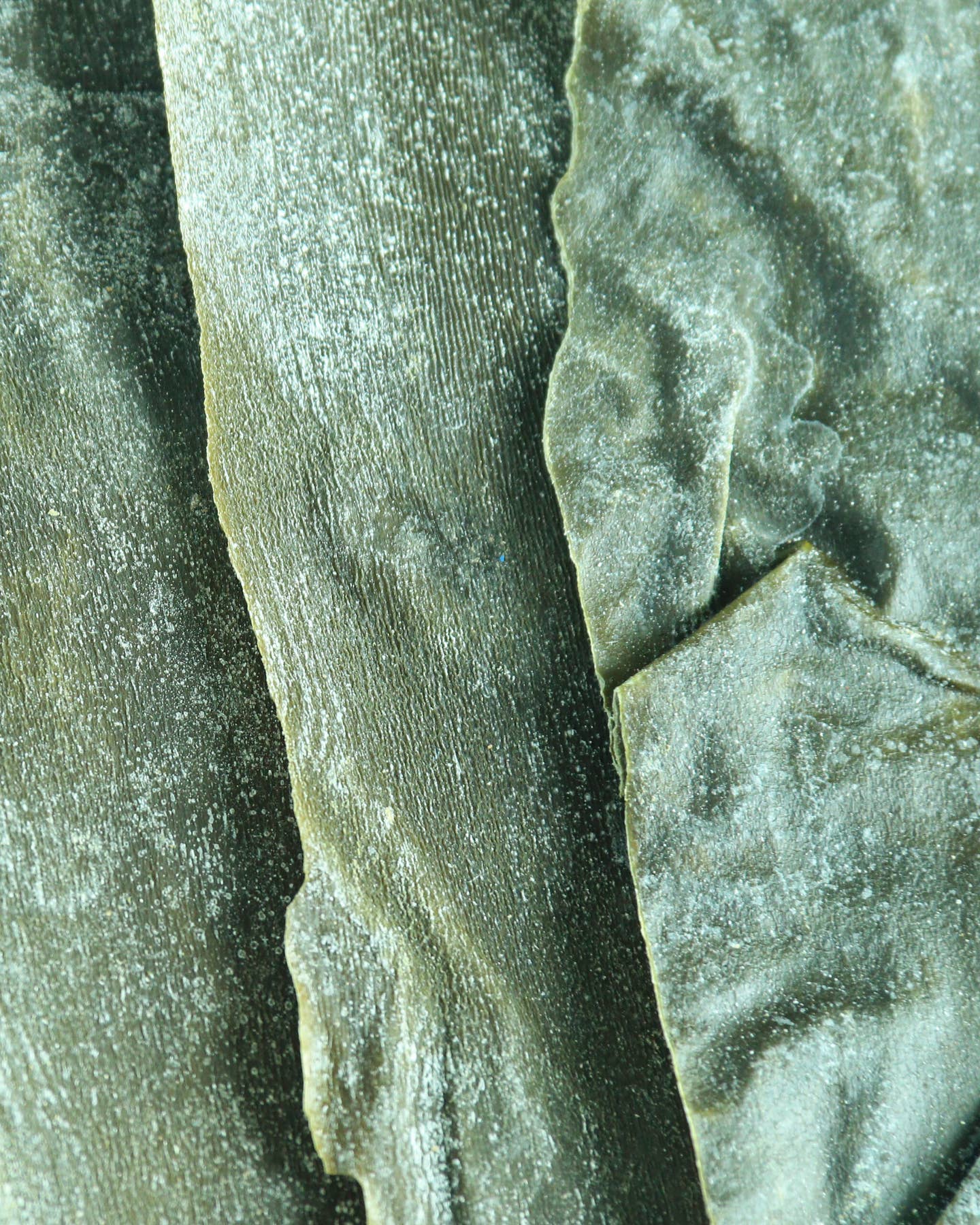This One-Ingredient No-Cook Stock Is at the Heart of Japanese Vegetarian Cooking
Konbu dashi lends flavor and depth to these three refreshing plant-based classics.

Konbu, or edible kelp, is ubiquitous across Japanese cuisine, and it’s arguably the most essential flavor base in the country’s vegetarian dishes. Cooked over low heat (or steeped overnight in cool water), it becomes konbu dashi, a versatile soup stock that brings the seaweed’s savory, briny flavor to countless Japanese specialties, from soups and stews to simple vegetarian sides. A pot of konbu dashi can unlock a wide variety of plant-based possibilities.
Species of Konbu
Though there are 18 edible species of konbu, four types are most common: ma-konbu, Rausu konbu, Rishiri konbu, and Hidaka konbu.
- Ma-konbu is mainly produced along the Hakodate coast of Hokkaido. These thick, wide strands are generally regarded as the best-quality Japanese konbu—it has an elegant sweetness and makes a clear yet rich dashi.
- Rausu konbu is harvested along the coast adjacent to the town of Rausu at the northern tip of Hokkaido’s Shiretoko Peninsula. The strands are a soft brown, with a lovely fragrance, producing a yellow- tinged, yet aromatic, rich dashi.
- Rishiri konbu is gathered along the coasts of Rishiri Island and Rebun Island off the northwestern coast of Hokkaido. The strands are firm and slightly salty, yielding a clear, gentle-flavored dashi, prized for high-level, elegant cuisine.
- Hidaka konbu is produced along the Hidaka coastal area of southern Hokkaido. The soft strands are a dark blackish green with an appealing viscosity when simmered. Hidaka konbu is perhaps the most readily found konbu in Japan and abroad. It makes a good traditional dashi, but is most suitable for konbu-maki (konbu rolls), tsukudani (sweet shoyu-simmered preserve), or other dishes in which the konbu is simmered.
How Konbu Is Harvested
Konbu gathering is tightly controlled by the local Japan Fisheries Cooperative Associations, and is only allowed during a six-week period from around July 21 through August 31. The season starts slowly, with gathering restricted to a short couple of hours three days a week, eventually extending to a five-hour period.
Konbu is harvested by fishermen who motor out in small boats over vast undersea kelp forests close to shore. The fisherman thrusts a long, hooked pole into the roots of the kelp, then wrenches up the heavy strands into a large pile on his boat.
The konbu is then hauled off the boat to a washing area before being spread on the pebbled beach to dry. The drying process is crucial and involves many steps. The kelp is turned once and, after about half a day, brought inside while it is still pliant. Finally, the konbu is sun-dried before being stored in a large, airtight, zippered storage room.
The Future of Konbu
Despite environmental precautions and restrictions, konbu harvests have been steadily declining due to ocean pollution and climate change. In 2019 only 13,000 tons of kelp were harvested, compared with 38,000 in 1990; the price of konbu has doubled in the last five years. Konbu extinction is a very real possibility, and the highest-quality varieties have already become quite difficult (and pricey) to obtain. Thankfully for home cooks, gnarled or lower-grade konbu still produces flavorful dashi, so do not despair.
How To Make Konbu Dashi
To make konbu dashi, first source the best-quality konbu you can find. (There’s no need to wipe off the white substance, which is called mannitol, that forms on the konbu—it’s harmless and contains a lot of umami.) Break an approximately six-inch-by two-inch piece of konbu in half, then place it in a small pot with one quart of cold water. Set aside to soak for three hours, then place the pot on the stovetop and turn the heat to low. Cook just until steam rises from the water and small bubbles form on the konbu, about 30 minutes. Remove from the heat and set aside to cool to room temperature before straining out the konbu and using the dashi. (The leftover konbu can be used to make a variety of dishes, like konbu tsukudani, or simmered konbu.) This process makes about 3½ cups of konbu dashi.
If you have time, you can also skip the stovetop process and simply soak the konbu overnight in the refrigerator and use the cold stock straight from the fridge. Or, if you are in a hurry, skip the preliminary soak, but still cook the konbu (just be sure to cool for at least 30 minutes before using).
Excerpted from JAPAN: The Vegetarian Cookbook © 2023 by Nancy Singleton Hachisu. Photography © 2023 by Aya Brackett. Reproduced by permission of Phaidon. All rights reserved.
Recipe
Keep Reading
Continue to Next Story










